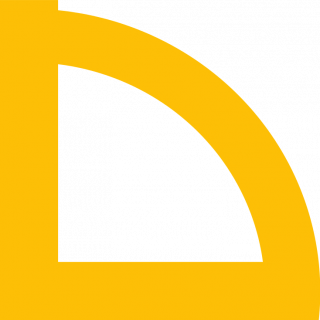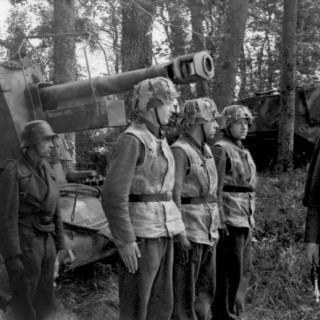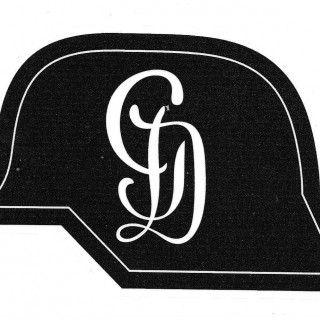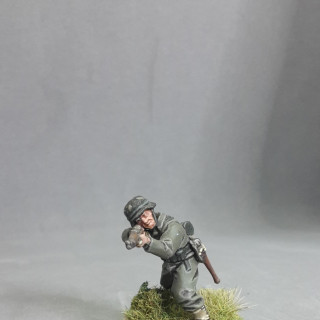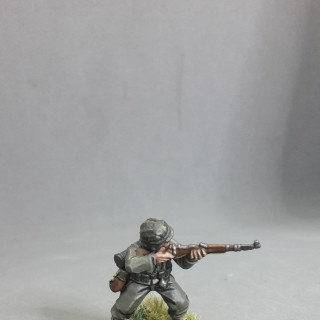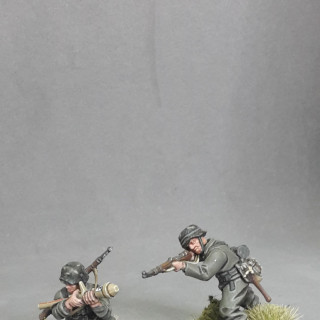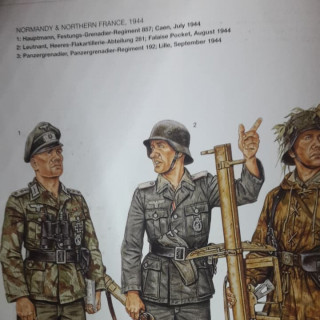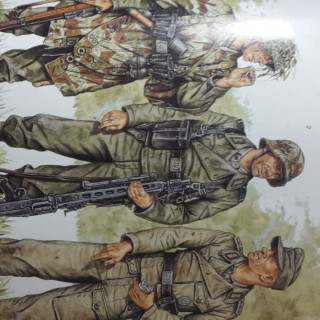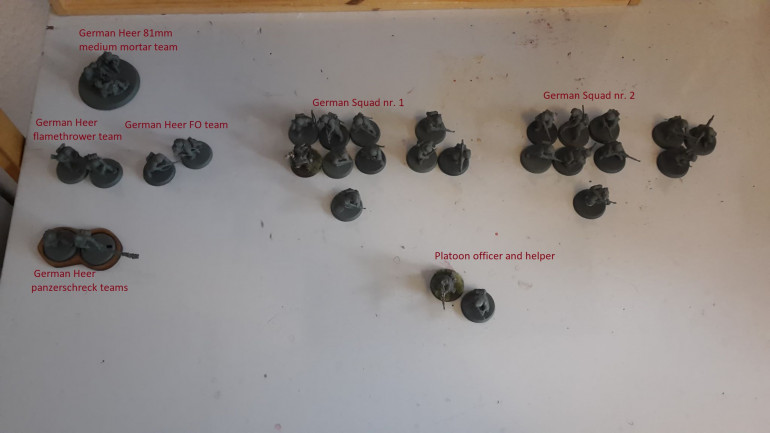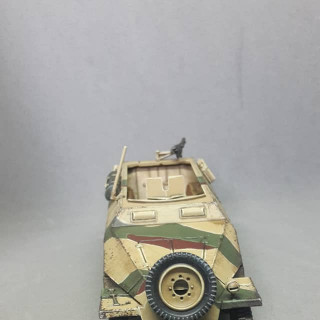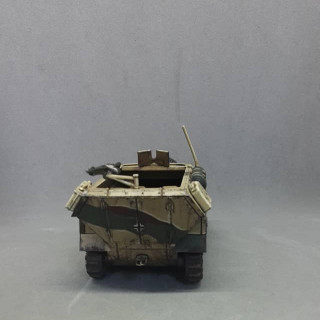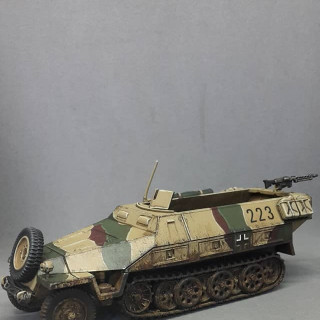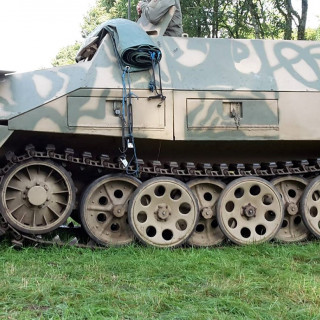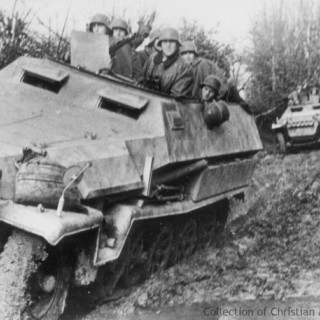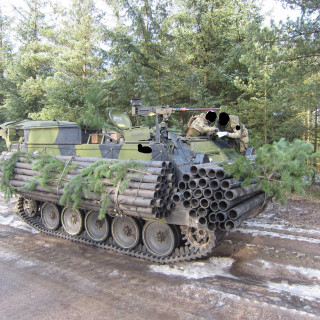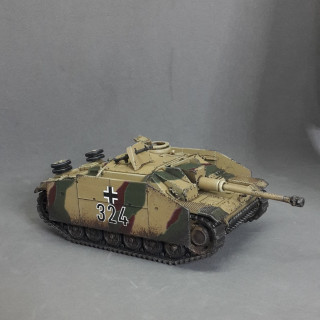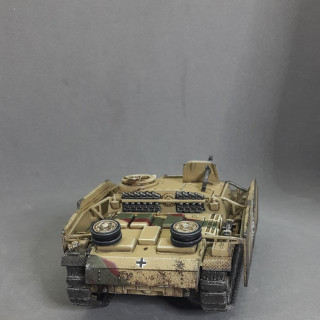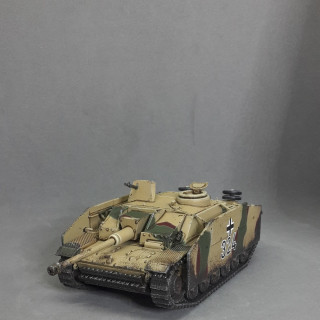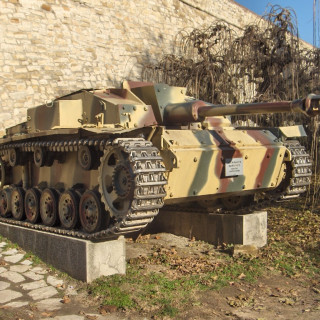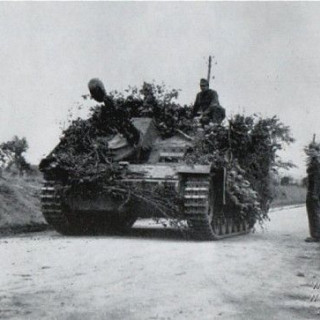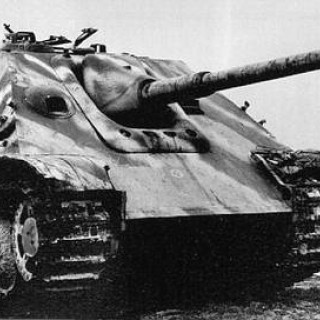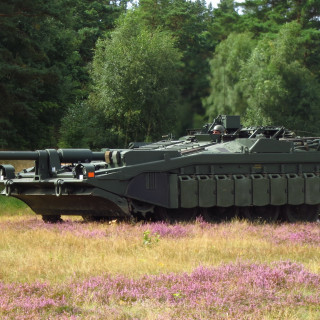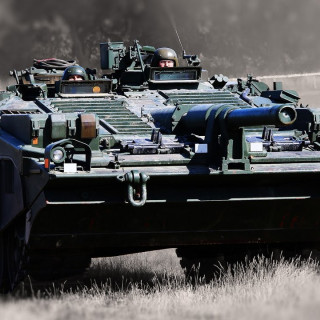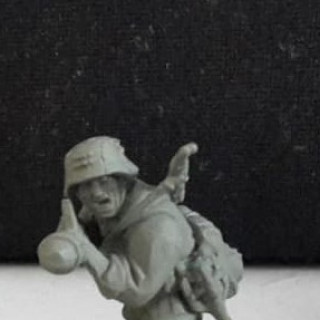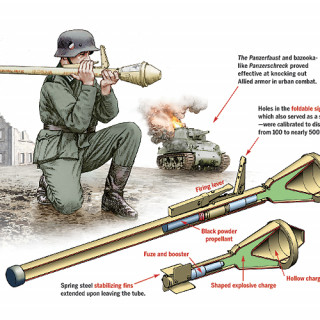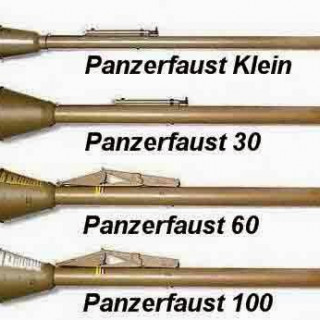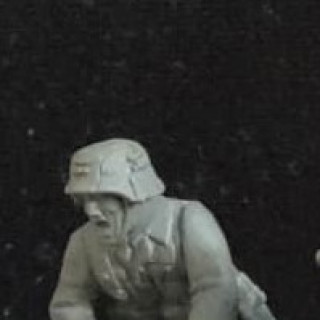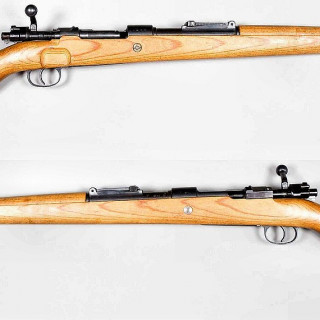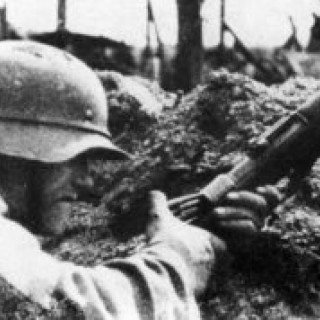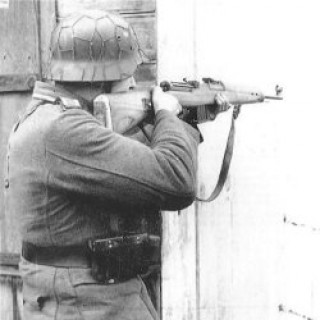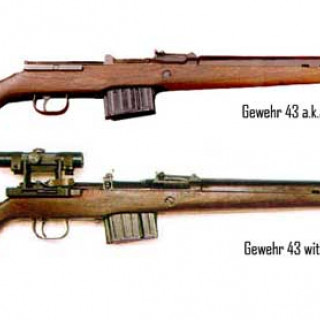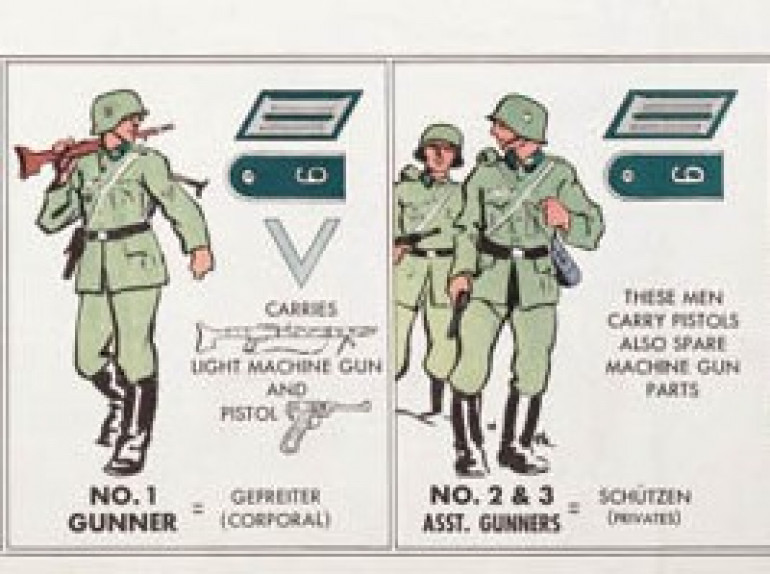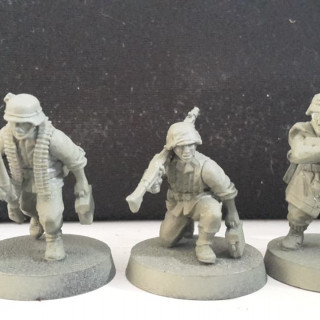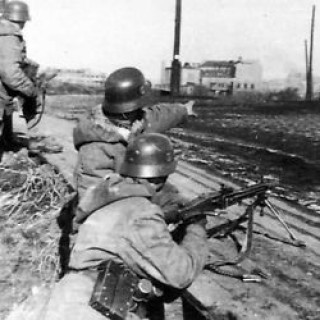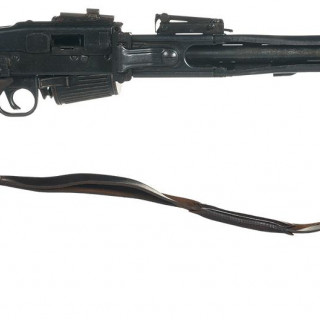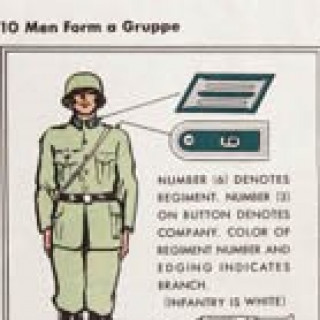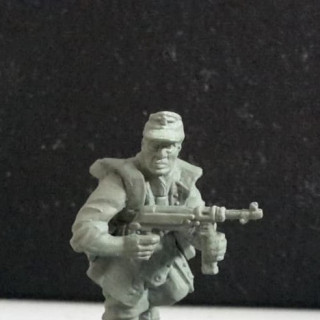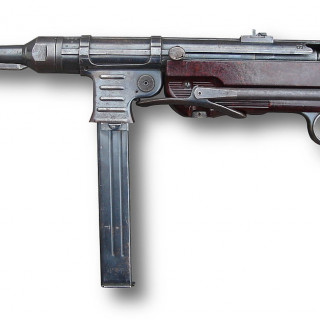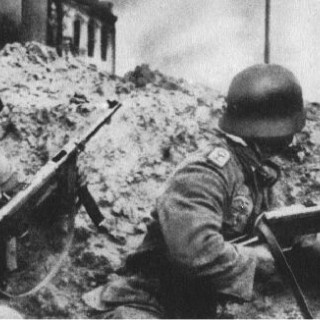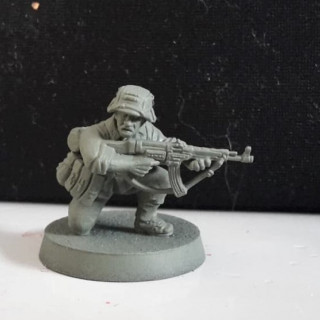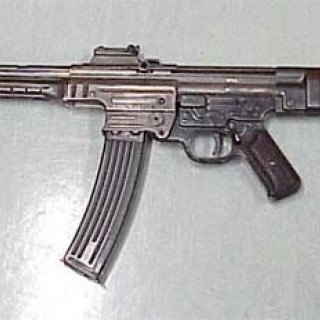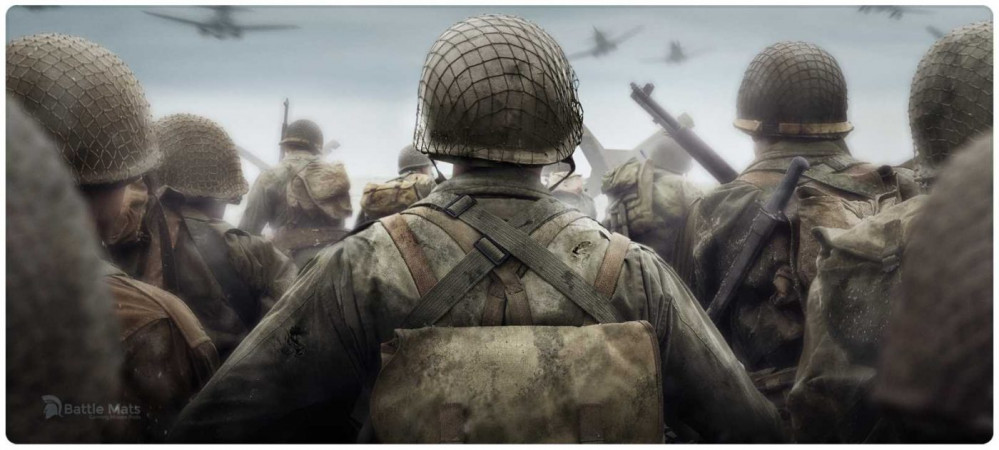
Bolt action: Historically Normandy 1944 project
Recommendations: 90
About the Project
Hey all. So the boot-camp videos have inspired me to share my Bolt Action project with you all. So my Bolt Action fascination started with Beasts of War "how to play" video back in first edition of Bolt Action. I myself comes from a background in the danish army (8 years and still going). I found therefore the small platoon size battles very relatable and a opportunity to, in some form, train my tactical understanding in general. I also soon have a BA in history (thanks to the danish version of the G.I.-bill) and it is therefore important for me that the representation of the squads (equipment, force organisation for squad size units) is historcally correct. I will therefore try, with this project-blog, to make a project that is historically correct on a squad level. of course everybody can make mistakes, and I hope that you all will help to correct me, if I do make some mistakes. I bought a couple of year ago the Bolt Action D-day firefight set. I therefore want to base the project on this set at its core. So I will be making an american army, airborne team and a german Heer army. I will be making the two armies in the late-war period, more precisely, Normandy 1944, Operation Overlord. From the alliede operational landing, that was launched on 6 June 1944 with the Normandy landings to the German forces retreated east across the Seine on 30 August 1944, marking the close of Operation Overlord.
Related Game: Bolt Action
Related Company: Warlord Games
Related Genre: Historical
Related Contest: Bolt Action: Western Desert Boot Camp
This Project is Active
German Heer so fare part. 2
Time for an update again. 😀
So after I had a little inspirational chat with Oriskany, I have decide to go with either the 21st Panzer Division or Grossdeutschland Divison. The reasons for this is that:
21 Panzer Division, was part of the African campaign and the Normandy defence. After taking alot of casualties in france, the division ended it days fighting a hard battle on the eastern front against the russians. because it is a panzer division it gives me a lot of opportunities to collect some interesting units and vehicles. And because of its interesting service records it gives me an opportunity in the future to take and expand my army to other “theatres of war”. Africa, France and last days of germany on the eastern front.
Großdeutschland Division, is a very interesting unit as a gaming army. It was highly prioritised in the german army, and had alot of the “new toys”. It gives me an opportunity to really game with some of the elite german stuff. It mainly served on the eastern front. But as @oriskany pointed out to me elements of Division Grossdeutschland, were pulled out of Russia for leave and rearmament in France, when operation Overlord hit. So eastern front (Russia, East Prussia) and Normandy.
However without getting in to a big discussion, there are some evidence that elements of this unit did commit war crimes on the eastern front. Maybe that’s worth taking into account.
What do you guys think, which of these two units would you make as an army?
I have been painting some german soldiers just to test out the colour scheme. It is based on pictures and historical sources for how the uniform looked during Normandy campaign.
I will as I promised earlier go more into how a german squad fought in one of the next posts. And I will look more at the german insignia on the uniform and vehicles, relating to one of units I decide to go with.
German Heer so fare
A quick update.
I have assemble all of my germans now. My german force now consist of:
20 infantry: Two squad of 10 soldiers build after the squad organization I have covered earlier.
1/1: platoon officer and 1 helper
1/1: Forward observer + 1 rifleman in support
1: 81 mm mortar team
1: flamethrower team
1: panzerschreckt team
1: Sd.Kfz 251/1 ausf D halftrack
1: stug III ausf G
I have cheated with the hanomag. I painted it some time ago.
It is a Hanomag Sd.Kfz 251/1 ausf D version. the D model can be easily recognized by its single piece sloping rear, with flat doors. It was designed to transport the mechanized infantry, into battle, an keep up with the armour units, so they had infantry support. Over 15000 Hanomags was produced during the WWII and was also used in Normandy.
It had room for the 10 man german squad and gave the squad some protection against small arms fire and shrapnel from artillery fire. The standard mounting was at least one MG 34 or MG 42 machine gun allowed the vehicle to provide suppressive fire for the squad while they dismounted. Its concept is what we know today from mechanized infantry. I used to be a commander of a m113 g3 version. Many soldiers in western armies knows and love/had the m113 and its variants. (see picture above of my old pioneer m113 )
I just finish painting this StuG III ausf G from Warlords and Italeri. It was a lovely little kit and a pleasure to paint.
The StuG III was one of the most numerous StuG variant. Even though StuG IV began production in late 1943, the numbers of production, from my understanding, never reached the same as the stug III version. It served on all fronts as assault guns and tank destroyers. Because of the StuG low silhouette it was ideal for defensiv operation and tank hunter. There for I chose this model version, with side hull spaced armour plates (Schürzen). This is because StuG definitely was used in Normandy
If you check out the swedish post-WWII main battle tank, stridsvagn 103, you can see a clear inspiration from armour types like the StuG and the jagdpanther models. The stridsvagn 103 was ideal for primarily a military on the defence, as the swedish was in the years after WWII. They learned alot from the germans experience.
German Heer squad organization part 3
Continuing on organisation of the german squad, we now move on to the bulk of the german squad, the rifleman. As I have said before the german squad consisted of 10 men. One SQL, one ASL, three man MG team and 5 rifleman. The five rifleman consisted of schützens (privates) and oberschützens (private first class).
The standard rifleman was equipped with a rifle and granades. But later in the war panzerfaust was a common sight in the german squad, because of the heavier tanks that the war evolved. From my own experience a infantry squad normally carry 1-2 single-shot antitank weapon in the squad.
The german rifleman was normally equipped with a Karabiner 98k known as K98k. It is was a bolt-action rifle chambered for 5-round stripper clip 7.92×57mm Mauser cartridge that was adopted on 21 June 1935 as the standard service rifle by the German army. It was the standard rifle throughout the war. More then 14 milion was produced.
Sometimes you would also see Gewehr 43 being used in the squad later in the war. This was the german equivalent of the US M1 model. Gewehr 43 was a 10-round magazin semi-automatic rifle that was suppost to replace the K98k at some point. But Gewehr 43 was “only” produced in the hundreds of thousands not in the milions like the K98k.
We have now gone over the build-up of the german squad. I will talk about some german infantry tactic next time.
German Heer squad organization part 2
So a german MG (machine gun) team consisted of one-two schützens (privates) and one gefreiter (lance corporal, specialist?). So you had a team of two less experienced privates and a older experienced corporal leading the team.
Two men handled the MG, with one man working as the gunner and the others as a loader. The third man was a rifleman, he helped carry extra ammo, spotted enemies and I suspect that his role was to secure the flanks of the MG team, so nobody assaulted them from behind, when the team was setup in a firing position.
the MG42 was a very good suppressing fire weapon which fired over 1200 rounds pr. minut. It was quit a mobil weapon that gave fire superiority quick. It is not a precision weapon, but you would keep your head down if fired upon!
I myself do actually have some experience with this kin of weapon. The danish army have since the end 60s been using the MG3 model (a further development of the famous german MG42) with great succes until very recent, when it was replaced with the M60E6. We used to call it the Nazis saw, because you actually could saw a small tree or a man over in half with it. It could actually be fired from the hip from a good gunner. We used it in Afghanistan on combat patrols. But it was quit heavy for the gunner to carry. A study showed that a gunner carrying this weapon over a period of 6 month actually scrinks the persons back by 1-3 cm.
I will talk about the last part of the squad next time.
German Heer squad organization part 1
Going into the squad organization I will start with the german heer squad. A standard german squad consisted of 10 men. Of course this was probably not always right. As every one with some military experiences knows, a squad is almost never up to 100 %. Either a member or more of the squad is ill/wounded or been transfered to another platoon/squad, which the higher commanding officers (in all their infinite knowledge #sarcasm) thinks is the best use of the manpower. Of course when a military campaign is rolling there is always the chance of casualties. And dont get me started with a squad being up to 100 % on material (food, weapons, tools and so on), that almost never happens. And when we talk mass warfare as WW2 was, I will bet you that a normal Heer platoon was always in short of supplies in someway or another.
Getting some work related frustration out of my systems, I will now go on to talk about the german heer squad.
As I said before the squad consisted of 10 men:
1 squad leader (unterfeldwebel) is equal in some degree a sergeant. He was normally equipped with a MP40. Giving the SQL (squad leader) an advantage in close range engagements. I think the reason why he was equipped with a MP (machine pistol) and not a rifle, is because the SQL is not the one doing the most shooting, but is analysing the situation and giving orders, and therefore dont have the time for long range aim shots. This comes from my own work experience as a private/private first class for 3 years and squad leader for 5 years now. It therefore makes good sense for the SQL to be equipped with a short range weapon and only shoot when the enemy is dangerous close.
I made my SQL with a MP40 and a M43 Field Cap. I know that it is a bad example for the SQL to wear the soft cap instead for the helmet. I know I would grill my squad members if they showed up to a firefight not in full combat gear! But I did this to the miniature for it to stand out, so it was easier locate on the tabletop battle.
the squad also consisted of a assistant squad leader (obergefreiter) equal to a corporal. Sometimes the obergefreiter could also act as a squad leader, do to either casualty or that the obergefreiter hadn’t completed his squad leader education yet.
I made my ASL (assistant squad leader) with a StG 44 to give the squad some extra fire power. I know this is perhaps historically on thin ice. StG 44 got into mass production after july 1944. But the beta version of StG 44 was named MP43 and was used with great succes on the eastern front. So if I have to place my squad in a time frame from start july 1944 to end august 1944, it maybe a rarity to see StG 44 in Normandy. What do you guys think? I was thinking about a narrativ where this german unit had been redeployed from Russia to France for rearmament and retraining of replacements, and that the unit brought their few StG with them, alongside the rest of the units equipment.
I will begoing over the MG team next.
About the project.
Hey all.
So the boot-camp videos have inspired me to share my Bolt Action project with you all. So my Bolt Action fascination started with Beasts of War “how to play” video back in first edition of Bolt Action. I myself comes from a background in the danish army (8 years and still going). I found therefore the small platoon size battles very relatable and a opportunity to, in some form, train my tactical understanding in general. I also soon have a BA in history (thanks to the danish version of the G.I.-bill) and it is therefore important for me that the representation of the squads (equipment, force organisation for squad size units) is historcally correct. I will therefore try, with this project-blog, to make a project that is historically correct on a squad level. of course everybody can make mistakes, and I hope that you all will help to correct me, if I do make some mistakes.
I bought a couple of year ago the Bolt Action D-day firefight set. I therefore want to base the project on this set at its core. So I will be making an american army, airborne team and a german Heer army. I will be making the two armies in the late-war period, more precisely, Normandy 1944, Operation Overlord. From the alliede operational landing, that was launched on 6 June 1944 with the Normandy landings to the German forces retreated east across the Seine on 30 August 1944, marking the close of Operation Overlord.
The first thing I will talk about and work on and show you is my german forces. I will be going into the squad organization, the way they fought and in some degree their equipment. I will hopefully have the first part of this up tomorrow. Hopefully you guys will find this interesting 😀









































